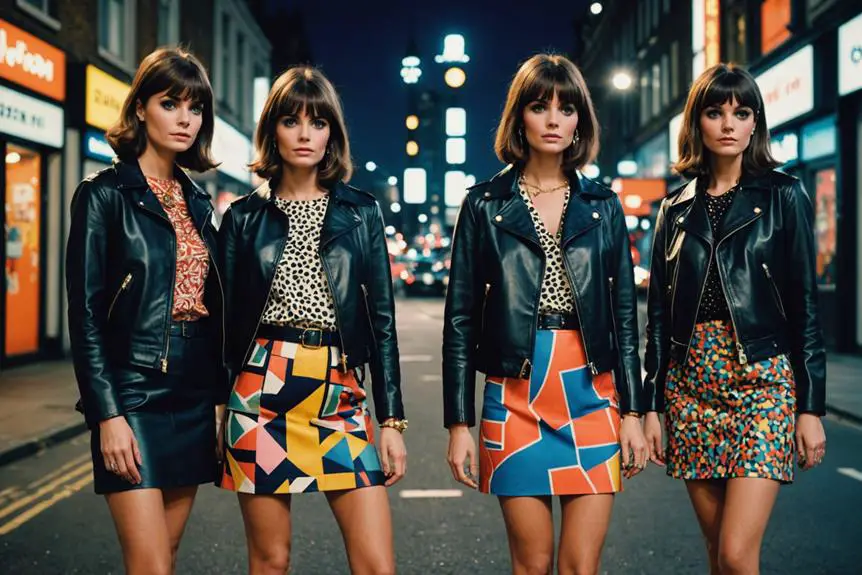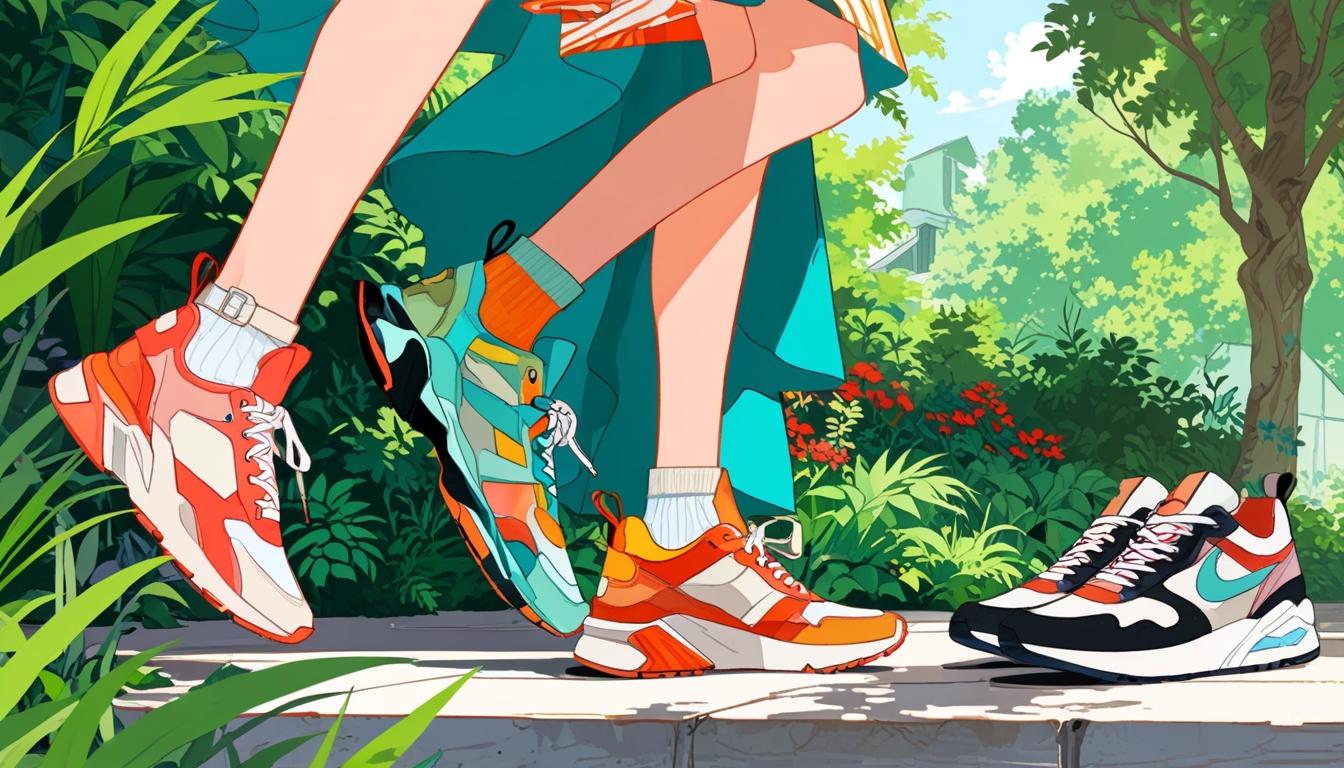Much like the iconic styles of the swinging sixties, "Last Night in Soho" transports you into a world where fashion becomes a character in its own right. You can't help but notice how Eloise's newspaper ballgown and Sandie's chiffon dress not only define their personas but also mirror the film's deeper themes. As you consider the significance behind these outfits, think about how they challenge traditional notions of glamour and power. What specific elements of the costume design resonate with you, and how do they reflect the film's narrative?
Film Overview
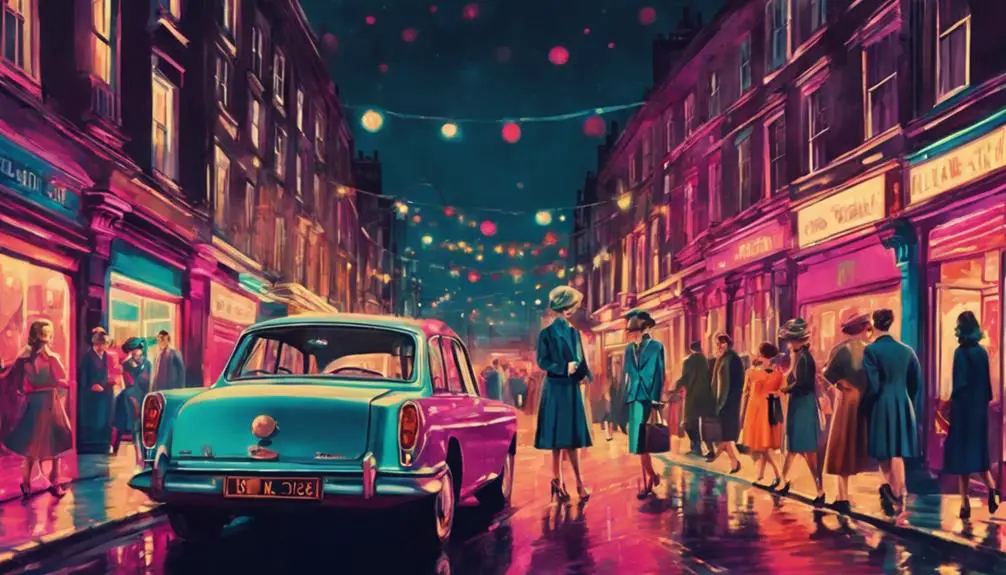
In "Last Night in Soho," you're drawn into a mesmerizing blend of psychological horror and fashion as Eloise, an aspiring designer, navigates the bustling streets of modern London. The film, directed by Edgar Wright, intertwines Eloise's contemporary journey with her haunting visions of Sandie, a glamorous 1960s singer. As you travel between the present and the vibrant past, the stark contrast between the two eras highlights the themes of empowerment and the darker sides of glamour in the fashion world. The film's exploration of vintage aesthetics resonates with those who appreciate the nuances of fashion history, akin to identifying vintage Ralph Lauren items by their unique characteristics. Eloise, portrayed with earnest determination, dreams of making a name for herself in the competitive fashion industry. Her obsession with the 1960s aesthetic leads her to a unique experience where she becomes entwined with Sandie's life. You'll find that the film doesn't shy away from the unsettling aspects of fame, as Eloise uncovers a mystery surrounding Sandie's potential murder at the hands of her boyfriend. This thrilling plot twist adds depth to the psychological horror elements woven throughout the narrative.
The film's costume designer plays a pivotal role in bringing the characters to life, expertly blending modern fashion with retro styles that immerse you in the era. As Eloise navigates her challenges, the costumes not only reflect her aspirations but also serve as a visual storytelling device, enriching your viewing experience. With its enchanting storyline and striking visuals, "Last Night in Soho" invites you to explore the enchanting yet perilous world of fashion and fame.
Costume Design Highlights
With a vibrant nod to the past, the costume design in "Last Night in Soho" breathes life into its characters and their journeys. Designed by Odile Dicks-Mireaux, the costumes draw heavily from iconic 1960s fashion, capturing the essence of the era while weaving in the psychological themes that permeate the film. Each piece not only mirrors the character evolution of Eloise and Sandie but also pays homage to the allure of vintage cinema, much like the evolution of vintage tag identification in fashion history.
Eloise's newspaper dress stands out as a creative triumph, requiring custom printing to navigate legal challenges. This unique textile design reflects her struggles as an aspiring designer, showcasing her artistic journey. On the other hand, Sandie's peach chiffon tent dress is a delight, crafted to facilitate dynamic movement. During dance scenes, it enhances the visual storytelling, allowing you to feel the rhythm of the era.
The white macs worn by both Eloise and Sandie further highlight the film's homage to classic films, creating a striking visual connection to the past. Dicks-Mireaux's meticulous attention to detail guarantees that each costume remains period accurate, while still resonating with contemporary audiences, striking a perfect balance between nostalgia and modern relevance.
Ultimately, the costume design in "Last Night in Soho" does more than just dress the characters; it elevates the narrative, immersing you in a world where fashion and storytelling intersect beautifully.
Character Wardrobe Essentials
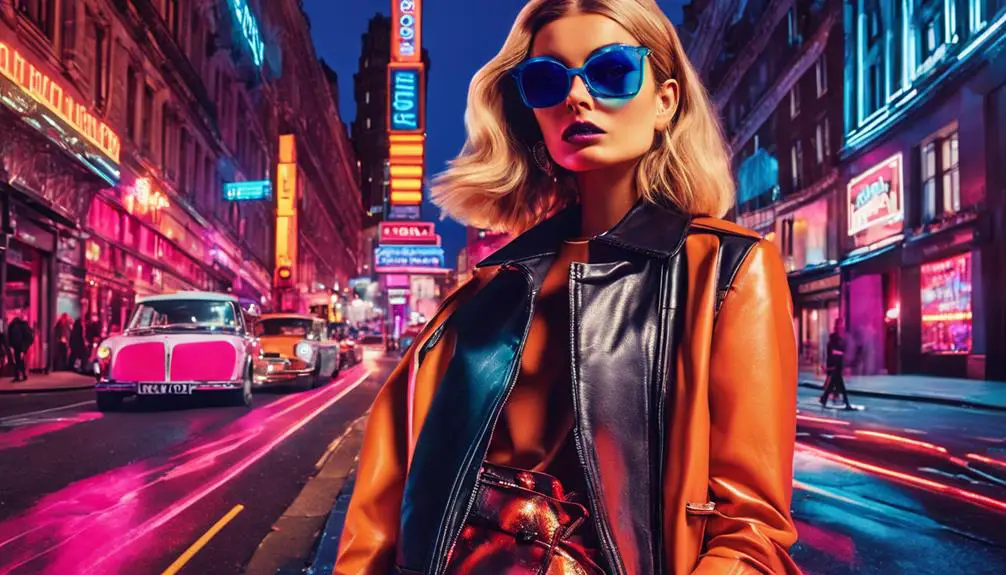
Character wardrobes in "Last Night in Soho" play an essential role in defining personalities and driving the narrative. Eloise, a passionate fashion student, showcases her creative aspirations through her standout wardrobe, particularly a unique ballgown made entirely of newspaper. This innovative design symbolizes her struggles and dreams, reflecting her artistic journey as she navigates the challenges of the fashion world.
In stark contrast, Sandie's character is defined by her iconic peach chiffon tent dress. This elegant piece not only highlights Sandie's allure as an aspiring singer but also enhances her movement, allowing her to captivate audiences in the 1960s setting. The costume designer skillfully uses clothing to elevate Sandie's charm while hinting at her evolving story.
Both Eloise and Sandie sport a striking white vinyl mac, a stylish nod to classic films that embodies the essence of 1960s fashion sensibilities. This piece connects their characters while reinforcing the film's nostalgic undertones. Meanwhile, Jack's wardrobe reflects a blend of DJ styles with a distinctly sleazy aesthetic, grounding his character's role in the narrative and contrasting with the more vibrant wardrobes of the female leads.
As Sandie's wardrobe evolves from innocent shift dresses to darker, more sophisticated pieces, it mirrors the film's progression and thematic shifts, immersing viewers in her world. Each character's wardrobe essentials not only define their identities but also enrich the storytelling, making fashion an integral part of "Last Night in Soho."
Design Inspirations and Influences
Drawing from the vibrant aesthetics of the 1960s, costume designer Odile Dicks-Mireaux crafted a visually enchanting wardrobe for "Last Night in Soho." Her inspirations stemmed from iconic films like "Darling" and "Beat Girl," showcasing distinct fashion elements that shaped the film's overall look. By diving deep into the world of 1960s films, Dicks-Mireaux embraced the styles of notable fashion icons such as Brigitte Bardot and Julie Christie, ensuring that each piece resonated with authenticity. The use of recognizable silhouettes from specific decades further solidified the film's connection to the era.
Creating mood boards played a crucial role in capturing the essence of 1960s styles. These boards incorporated elements from vintage fashion magazines and beloved B-movies, allowing Dicks-Mireaux to visualize how each character's wardrobe could reflect their personalities and story arcs. The design process was meticulous, involving the sourcing of vintage clothing from renowned costume houses in Paris and London. This attention to detail not only enhanced the film's period accuracy but also enriched the characters' depth, making their journeys more relatable and engaging.
Moreover, Edgar Wright's collaboration with Dicks-Mireaux was key to integrating character-specific aesthetics while maintaining the film's overarching stylistic narrative. Their shared vision allowed for a seamless blend of fashion and storytelling, ensuring that every outfit contributed to the immersive experience of "Last Night in Soho." The result is a stunning visual feast that highlights the charm and complexity of the 1960s, inviting you to step back in time while enjoying a rich cinematic experience.
Costume Challenges Faced
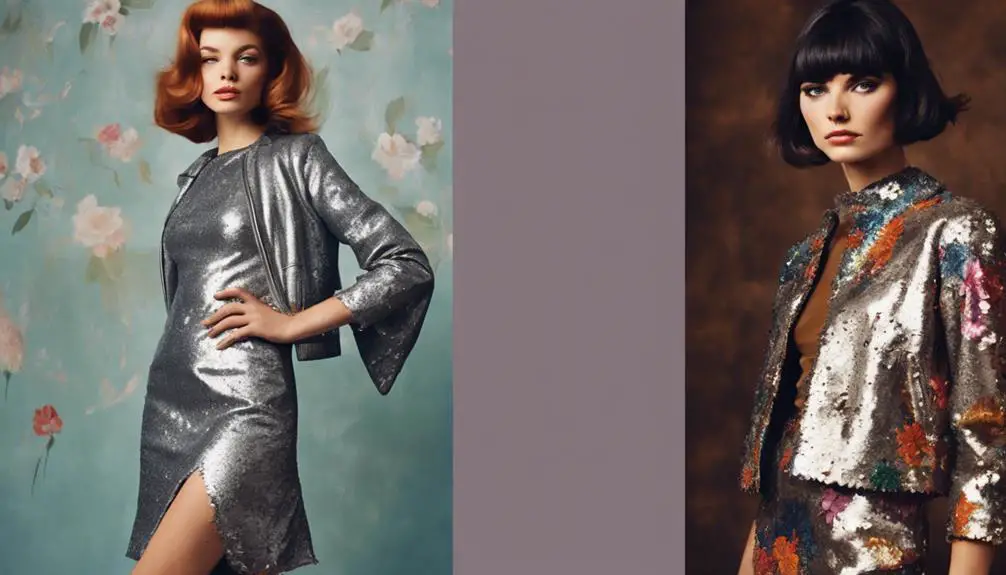
Maneuvering the complexities of costume design for "Last Night in Soho" presented a unique set of challenges that required both creativity and precision. One standout task was designing Eloise's newspaper dress. The team had to employ custom printing techniques to sidestep potential libel issues from using real newspaper images, showcasing the significance of innovation in costume design.
Creating Sandie's chiffon tent dress also posed its own hurdles. This costume needed to capture dynamic movement during dance scenes, striking a delicate balance between aesthetics and functionality. It had to look stunning while allowing Sandie to move freely, ensuring that the audience could fully appreciate the choreography.
A noteworthy challenge that the team faced was merging modern interpretations of 1960s fashion with vintage aesthetics. They aimed for authenticity that appealed to contemporary audiences, which meant carefully selecting colors, patterns, and silhouettes that felt fresh yet nostalgic.
Additionally, Sandie's costume evolution was meticulously planned to reflect the film's darker themes, requiring innovative design approaches to convey her character's depth visually. This evolution was vital in enhancing the storyline and connecting the audience with her journey.
Collaboration with the actors proved essential throughout this process. Their input led to adjustments in costume designs that complemented performances, elevating the storytelling in ways that a solo effort simply couldn't achieve. Overall, these challenges transformed into opportunities, showcasing the incredible artistry and teamwork behind the film's engaging costumes.
Cultural Impact of Fashion
Costumes in "Last Night in Soho" do more than just define the characters; they also reflect the broader societal attitudes and fashion trends of the 1960s, enriching the film's authenticity and narrative depth. Costume designer Odile Dicks-Mireaux meticulously researched period fashion, channeling the spirit of iconic figures like Brigitte Bardot and Julie Christie. The resulting outfits not only dazzle but also embody the cultural commentary woven throughout the film. The attention to detail in the costumes echoes the evolution of fashion over the decades, much like the way vintage Versace pieces tell stories through their unique tags and designs.
As you watch, you'll notice how the juxtaposition of glamor and horror in the characters' wardrobes symbolizes the duality of the 1960s. This era was marked by vibrant women's fashion that celebrated freedom and self-expression, yet it also exposed the underlying dangers faced by women. Dicks-Mireaux's designs capture this complexity, showcasing vintage aesthetics that resonate with contemporary audiences.
The impact of "Last Night in Soho" extends beyond the screen, sparking renewed interest in 1960s styles and inspiring viewers to incorporate these elements into their modern wardrobes. The film emphasizes the role of costume design as an essential storytelling tool, shedding light on the evolution of women's fashion and the influence of societal expectations. By immersing yourself in the film's fashion, you engage with a deeper narrative about identity and empowerment, making this cinematic experience not only visually stunning but also culturally enriching. So, plunge into the world of "Last Night in Soho" and appreciate how its fashion choices reflect and challenge the norms of the time!
Shopping for Movie Outfits
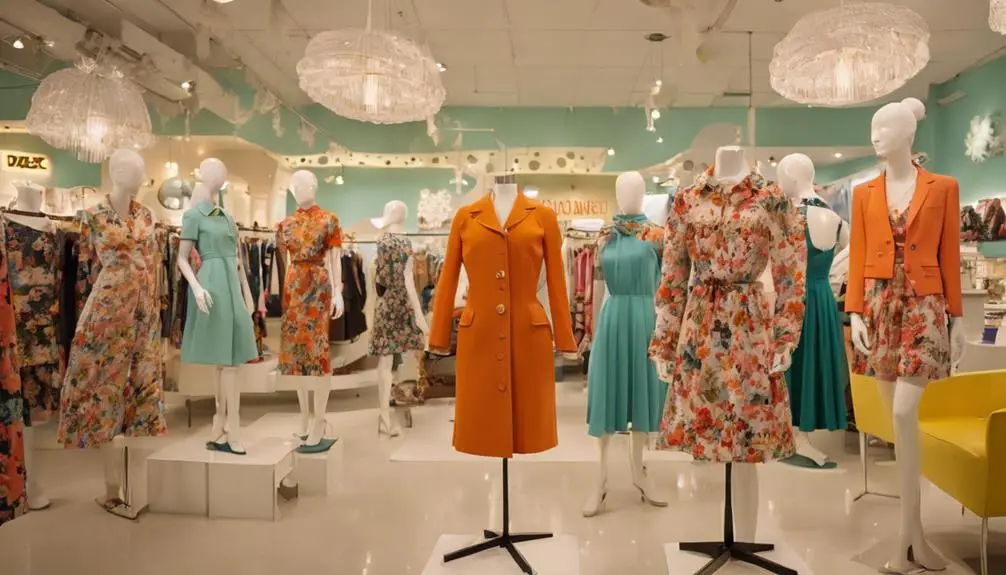
If you're looking to channel the stunning styles from "Last Night in Soho," now's the perfect time to shop. With the Halloween Sale in full swing, you can snag incredible discounts on outfits inspired by this enchanting film. This is your chance to embody the unique blend of 1960s fashion and contemporary styles that costume designer Odile Dicks-Mireaux brought to life, featuring standout pieces worn by Anya Taylor-Joy and Matt Smith.
You won't want to miss out on Matt Smith's iconic Jack Blazer, originally priced at $229.00, now available for just $139.00. If you're more drawn to Thomasin McKenzie's character, the Eloise White Coat, which used to cost $289.00, is a steal at $149.00! Other fabulous finds include Eloise's Long Brown Coat, now $159.00 (down from $289.00), and Sandie's White Leather Coat, priced at just $139.00, reduced from $229.00.
These limited-time offers are designed to excite both fans of the film and fashion design enthusiasts, so you'll want to act fast. Whether you're planning a costume party or simply want to elevate your casual wear, these outfits will allow you to showcase your style while celebrating the film's aesthetic. Don't hesitate—dive into the Halloween Sale, and let the vibrant looks of "Last Night in Soho" inspire your wardrobe!
Frequently Asked Questions
What Coat Did She Wear in Last Night in Soho?
Like a classic film still, you'll find her in a striking white coat, embodying vintage inspiration and character style. This iconic piece reveals her fashion choices, showcasing a wardrobe analysis that highlights the film's costume design.
Why Was Last Night in Soho Flopped?
"Last Night in Soho" flopped due to poor box office performance, mixed audience reception, and critical reviews. Its marketing strategy fell short, struggling against competition while failing to meet genre expectations given its high production budget.
How Did She Get a Hickey in Last Night in Soho?
You see the hickey as a pivotal plot symbol, reflecting character relationships and emotional impact. It highlights Eloise's character development, showcasing her fashion choices and eliciting mixed audience reactions regarding desire and the dangers behind it.
How Did They Film the Mirror Scenes in Last Night in Soho?
To film the mirror scenes, they used innovative filming techniques, combining mirror effects, lighting design, and sound integration. Editing choices enhanced visual symbolism, showcasing character reflections that captivated audiences and enriched the story's depth.
